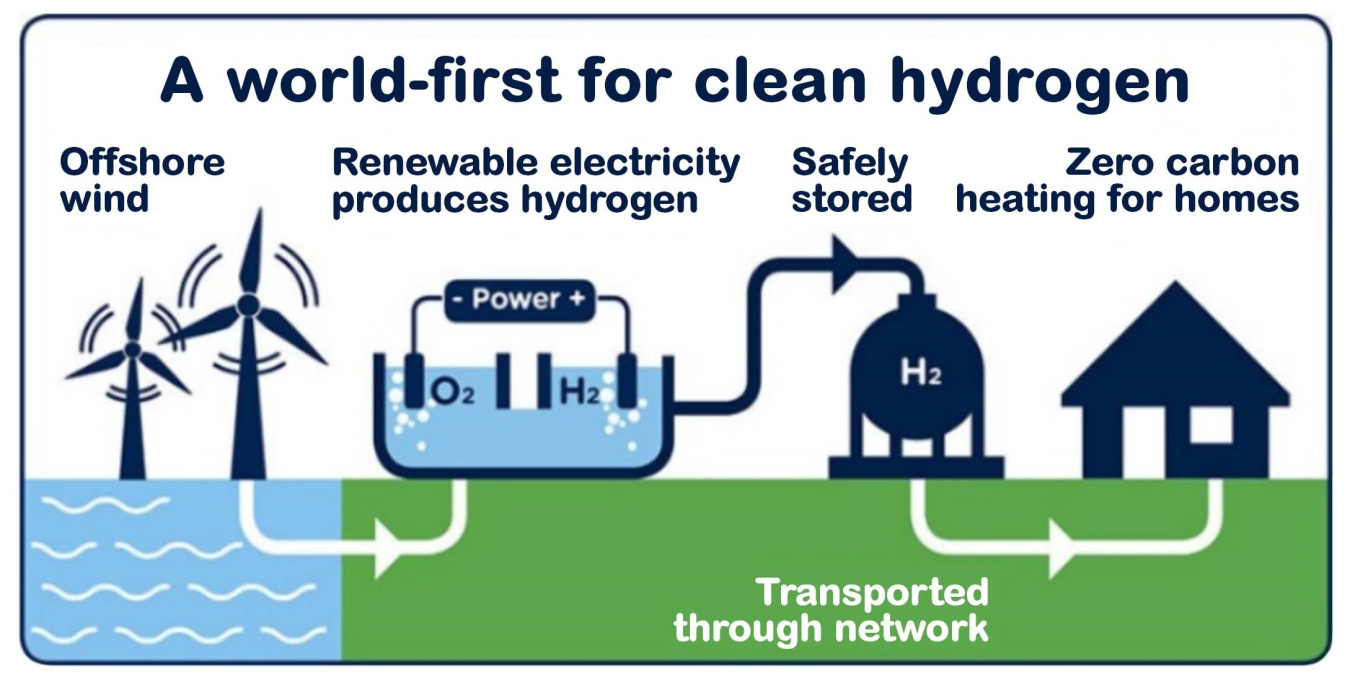
Hydrogen does not occur freely in nature, because it reacts readily with and binds to other elements. Because of these properties, hydrogen needs to be created from existing molecules. Doing so requires energy, and that energy can come from various sources including renewables (wind, solar, hydropower, biomass, and geothermal energy), nuclear power, and fossil fuels (such as natural gas and coal – with carbon capture and sequestration). The U.S. currently produces more than 10 million metric tons of hydrogen per year, about one-seventh of the global supply.
Natural gas is currently the primary fuel source used to produce hydrogen. Although it is currently one of the lowest cost options, the use of natural gas releases carbon dioxide into the atmosphere, a greenhouse gas that contributes to climate change. The natural gas industry uses carbon capture and sequestration processes to capture the greenhouse gases produced by natural gas, but this technology has not yet achieved widespread use.
Alternatively, hydrogen can also be produced through water electrolysis, where water molecules are split into oxygen and hydrogen using an electric current generated from clean energy sources, like wind or nuclear energy. When the electricity used in electrolysis comes from renewable energy resources, no carbon emissions are released into the environment. While many renewable energy sources can be used for hydrogen production, governments and energy companies around the globe are showing interest in offshore wind for this use, in particular to decarbonize industrial sectors.
In addition to eliminating CO2 emissions, hydrogen can offer the ability to store excess renewable energy that would otherwise be wasted. Today, when energy supply exceeds demand, electrical grid operators occasionally ask renewable energy generators to curtail—or waste—the renewable electricity because there is not enough storage capacity to accommodate it. As the amount of renewable energy on the grid grows, these challenges will only increase. Battery storage can help, but relying only on batteries will not be cost-effective to address seasonal and longer-duration storage requirements. Instead of wasting extra energy produced by wind and other renewables, though, it could be converted into hydrogen. This hydrogen could be stored and then converted back into electricity by fuel cells or hydrogen-driven turbines when needed. More research is needed to make this process cost-competitive with existing technologies, and as cost decreases it could more widely adopted in the future.

Today, hydrogen has several industrial uses, including in oil refining, ammonia production, methanol production, and steel production. Clean hydrogen can significantly reduce the carbon footprint of these industries. DOE's H2@Scale initiative is researching the vast impact hydrogen can have on different applications, including heavy duty applications that are hard to decarbonize using other approaches. Examples include heavy duty trucks, rail transportation and maritime applications as well as backup power for data centers.
Although clean hydrogen could be an important source of energy in the future, limitations still exist. Because it currently costs more to produce, hydrogen from renewables accounts for less than 1% of annual hydrogen production, while hydrogen from natural gas represents 95%. To reduce the carbon footprint of hydrogen production and enable at scale hydrogen use, on June 7, 2021, DOE announced the Hydrogen Shot, aiming to reduce the cost of clean hydrogen by 80% to $1 per 1 kilogram in 1 decade ("1 1 1").
Since hydrogen flammable, similar to other gaseous fuels, and has low energy density (i.e., it takes up physical space), storage and transport is also a challenge. Bulk transportation of hydrogen will require further investments in pressurizing, cooling, transport pipelines, and local hydrogen production for direct use. Hydrogen from renewables is also currently less efficient due to the conversion processes, with some energy lost during electrolysis. However, research work and demonstrations to tackle this challenge and to improve the efficiency in the electricity conversion process are underway.
The Outlook for Hydrogen from Wind
While only a fraction of today’s energy mix, hydrogen produced using wind energy could become a key component in a global zero-carbon future. DOE’s Hydrogen and Fuel Cell Technologies Office is looking at scenarios showing potential for 5X growth in hydrogen production from current levels. As offshore wind and other renewables grow, the opportunities to produce and store clean hydrogen will also expand. Clean hydrogen can help the United States and other countries meet the energy demands of tomorrow.